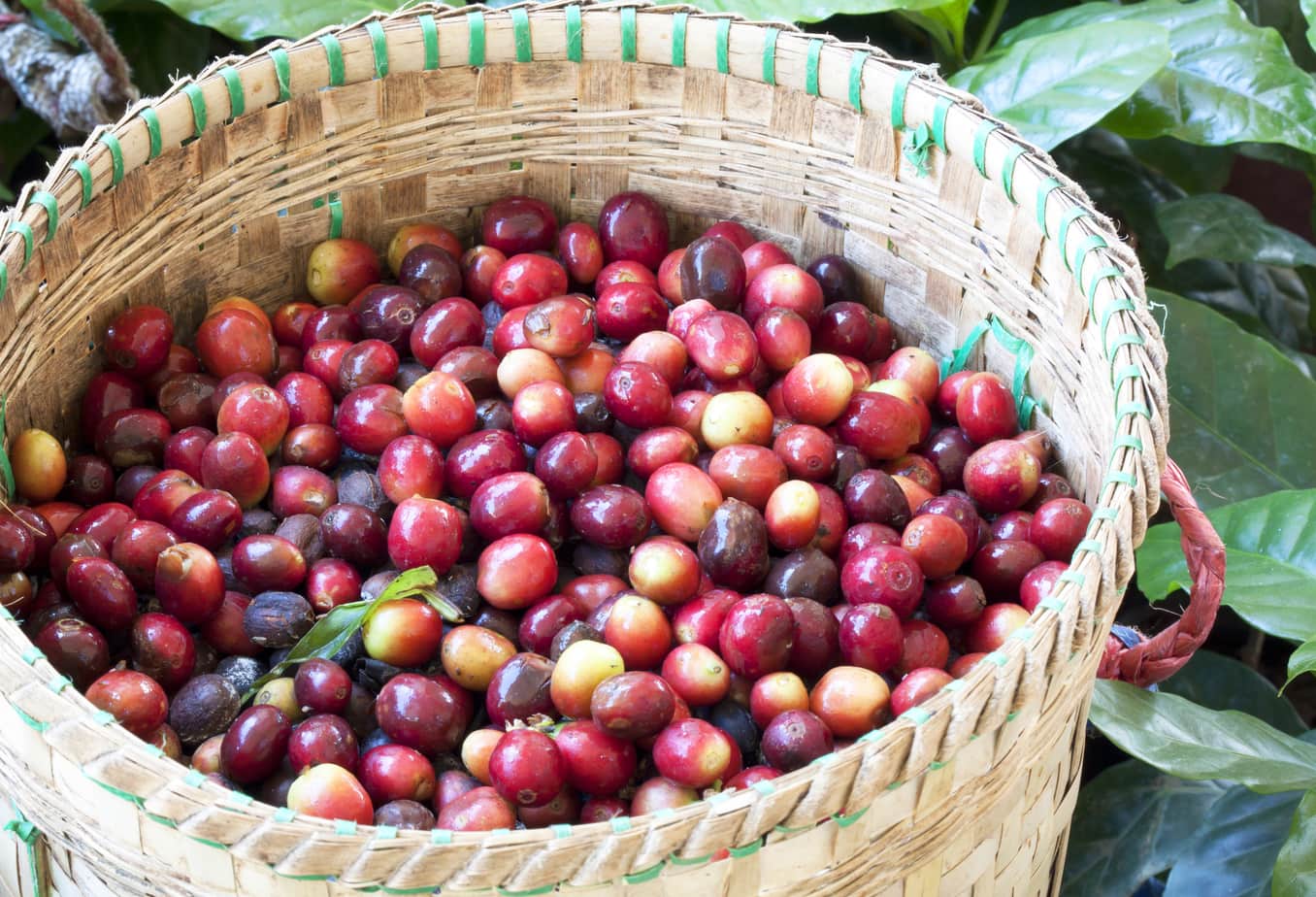According to the Internation Coffee Organization (ICO), we drink 1.4 billion cups of coffee per day around the world. Nearly 45% of that number, or 400 million cups of coffee a day, are drunk in the United States alone.
That’s a lot of coffee! But have you ever thought about coffee from a deeper perspective? Where does it come from? Is it from plants or does it grow on trees? How does it get from bean to cup? Follow us through this article to discover the inner workings of our beloved bean.
Where do coffee beans come from?
Coffee originated from the continent of Africa in the country of Ethiopia.
From there, over the years, coffee beans migrated to South East Asia, Central, and South America.
Today, Brazil, Vietnam, Colombia, Indonesia, and Ethiopia are still the world’s top 5 leaders when it comes to growing and producing coffee.
Brazil alone produces over 5 billion pounds of coffee every year and has been the world’s top coffee producer for more than 150 years.

What type of coffee plants are there?
There are two different types of coffee plants that coffee beans grow on.
The first is Robusta, otherwise known as Coffea robusta, or Coffea canephora. Robusta coffee is known for its earthy notes. It is bold and starts off bitter and a bit grainy, but ends with a smooth peanut buttery aftertaste.
The second type is Arabica or Coffea arabica. For those who don’t like the harsher taste of Robusta beans, Arabica beans may be the way to go. The reason for this is that Arabica beans are both sweeter and softer than Robusta beans.
Arabica has notes of sugar, berries, and fruit to it. Their acidity is also higher, with that winey taste that characterizes coffee with excellent acidity.
What do coffee beans grow on?
Did you know that the coffee bean is actually considered a seed is known as a coffee cherry? It usually takes a newly planted coffee tree anywhere from two to four years to grow beans that are ripe enough to harvest.
So do coffee cherries grow on plants or on trees?
A mature, well-grown coffee plant, can usually grow to a height of between 30-40 feet tall. Since a tree is considered anything larger than 20 feet tall with a trunk bigger than 3 inches in diameter, a coffee plant clearly starts off as a plant but later qualifies as a tree.
Once the berries, otherwise known as cascara or coffee cherries, turn a ripened red color, they are harvested.

What is the growing process?
After the newly planted coffee plants have grown, the harvesters will check the coffee cherries for ripeness.
Once the coffee beans are ready to be harvested, the crops are then picked by hand in a difficult labor-intensive process. However, in places like Brazil, where the landscape is relatively flat and the coffee fields immense, the process has been mechanized.
After the beans are harvested, they go through one of two types of processes. The dry method or the wet method.
The dry method is commonly used in countries where water resources are limited.
First, the freshly picked cherries are spread out on huge surfaces to dry in the sun.
The harvesters will then try to prevent the cherries from spoiling by raking and turning them throughout the day. Lastly, they will be covered at night or during rain to prevent them from getting wet.
The wet method removes the pulp from the coffee cherry after harvesting so the bean is dried with only the parchment skin left on the coffee bean.
After completing one of the two methods mentioned above, the bean continues on its journey to us.
How do you get coffee beans?
Coffee beans go through a mulling process before being shipped to us as customers.
This includes a technique called hulling, where the parchment layer from the wet-processed coffee. It is then sometimes sent to a polishing process to get rid of any excess skin.
Finally, the beans are graded and sorted according to size and weight.
After any defective coffee beans are removed, the bags of coffee beans are then exported to their respective buying countries.
Upon arrival, coffee tasters, usually called cuppers, will then test the beans repeatedly to ensure the quality of taste.
An expert cupper can taste hundreds of samples of coffee in a day and still taste the subtle differences between them.
The tests
These tests include a visual test to make sure the beans look good. Then, the coffee beans will be immediately roasted, ground and submerged into a temperature-controlled boiling cup of water so that the cupper can judge the aroma the coffee gives off.
Once the coffee has had time to rest, the cupper will quickly slurp a spoonful before spitting it out. The purpose of this is to spread the coffee as evenly over the cupper’s taste buds as possible. This allows the cupper to weigh the coffee on his/her tongue.
They do this to not only determine the characteristics and flaws of the coffee but to also analyze the potential of blending different beans or the ability to create the proper roast.
After the beans have been thoroughly tested, they are then roasted. This is usually done in the importing country as roasted coffee needs to reach its consumers as quickly as possible.
The coffee beans are usually put through a roasting machine that turns the green coffee into the brown beans that we purchase from our favorite coffee shops/companies

Where do Starbucks coffee beans come from?
Do you think Starbucks uses robusta coffee or arabica coffee for their world-famous coffees?
If you guessed arabica beans you are correct! Given its more refined taste, Starbucks uses only arabica coffee (Coffea arabica).
Starbucks sources its arabica coffee from three key growing regions, Latin America, Africa, and the Asia-Pacific. However, their signature coffee blends are mostly from the Asia-Pacific region.
According to its website, Starbucks also has a rich history of sourcing coffee beans from Guatemala, Rwanda, and Timor for their coffees.
Starbucks Reserve, the new hybrid version of a regular Starbucks coffee shop, boasts blends from Uganda, Kenya Vietnam, Brazil, and Colombia.
After a public relations disaster around a decade ago, Starbucks committed itself to both fixing its image and also improving practices in the coffee industry. They achieved this by investing more than $100 million in supporting coffee communities and collaborating with farmers through programs such as Coffee and Farmer Equality (C.A.F.E.).
You can read more about their commitment to fair trade and ethically sourced coffee here.
And that ladies and gentlemen are how coffee gets from the coffee trees into your cups at home. Next time you walk into your local coffee shop and buy your favorite coffee, you can truly appreciate the labor of love that went into that single bean, bag, or cup.







